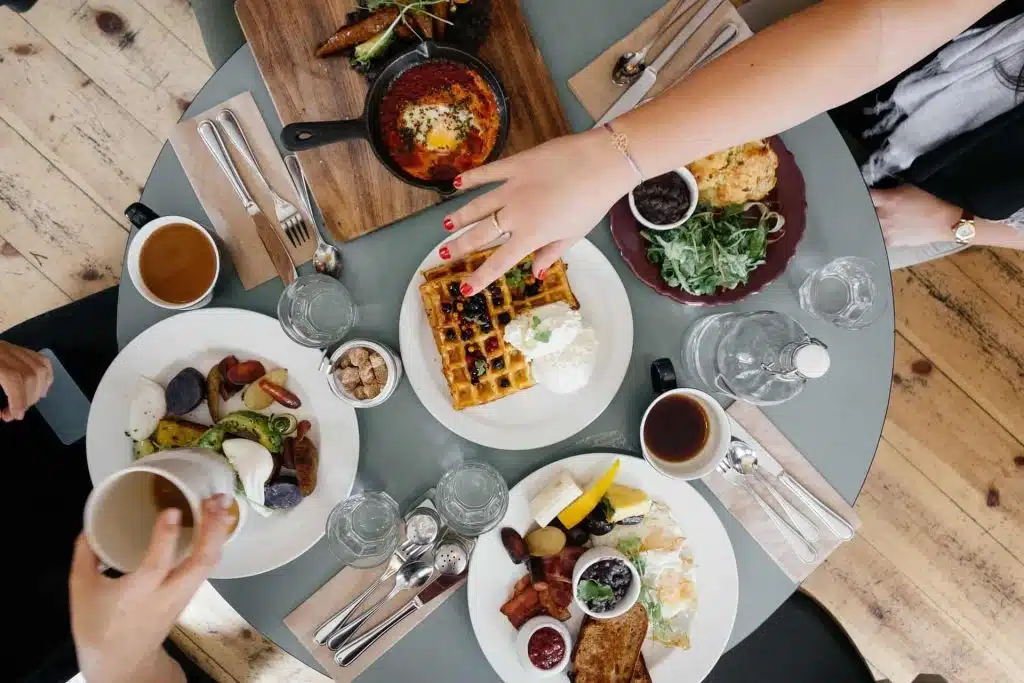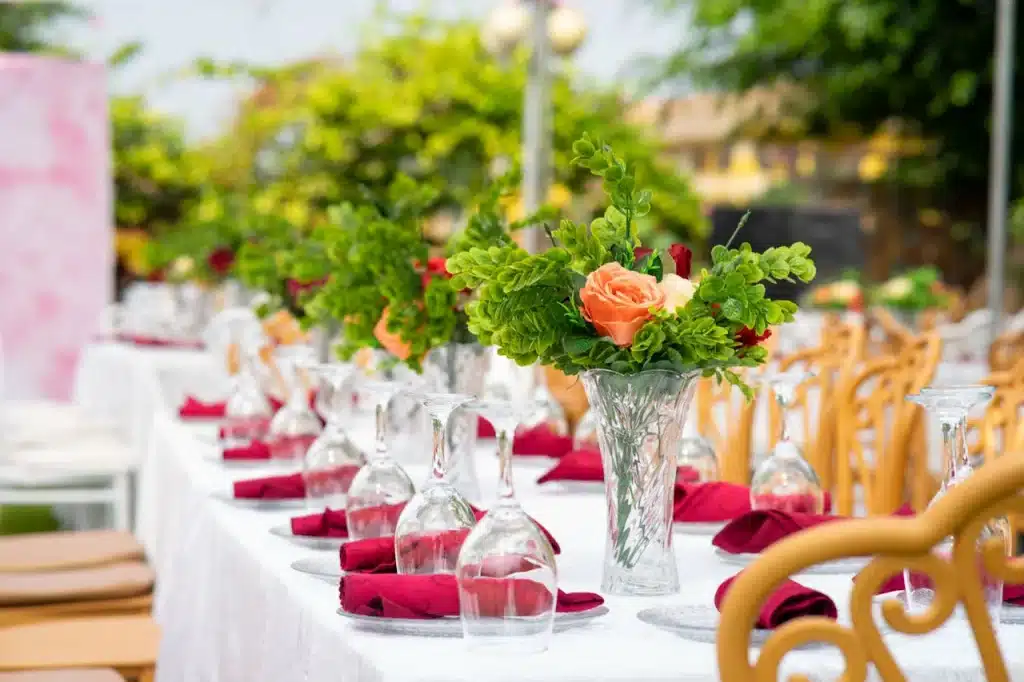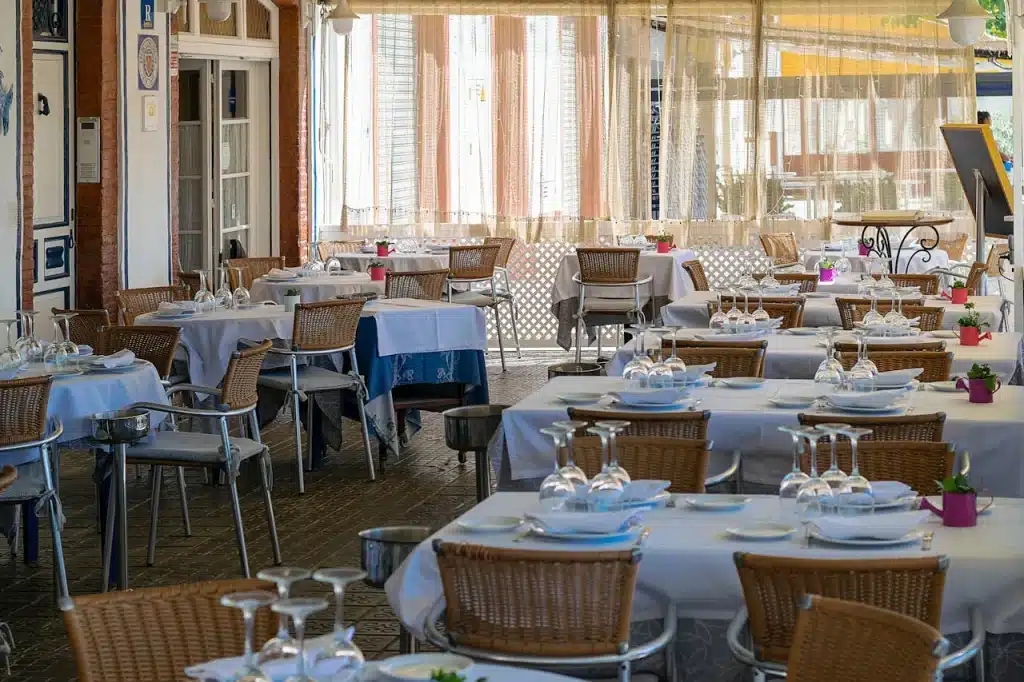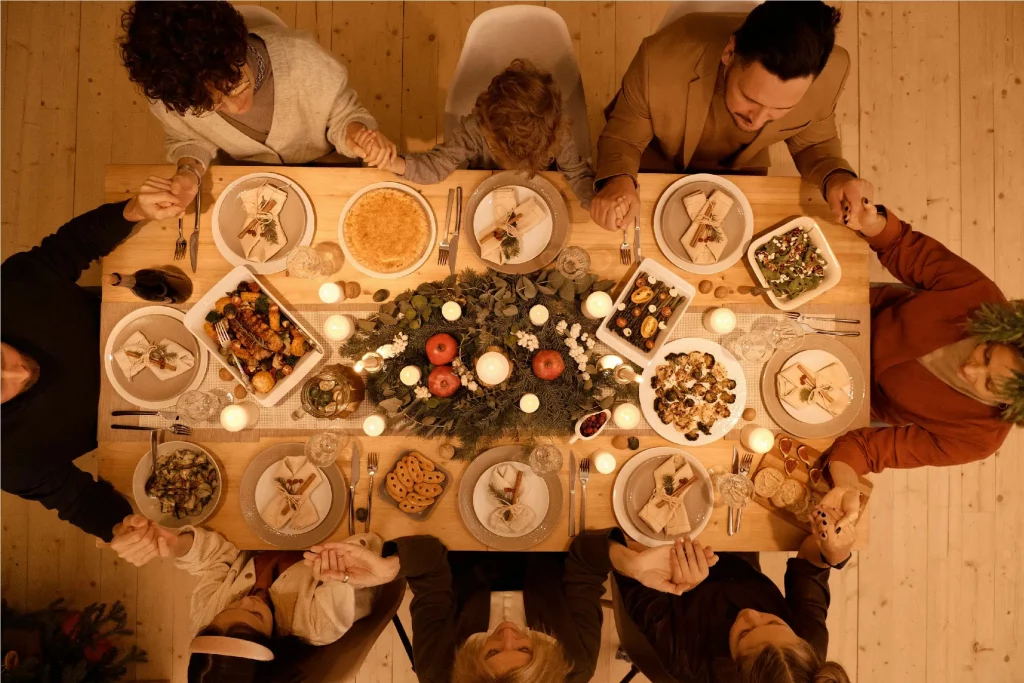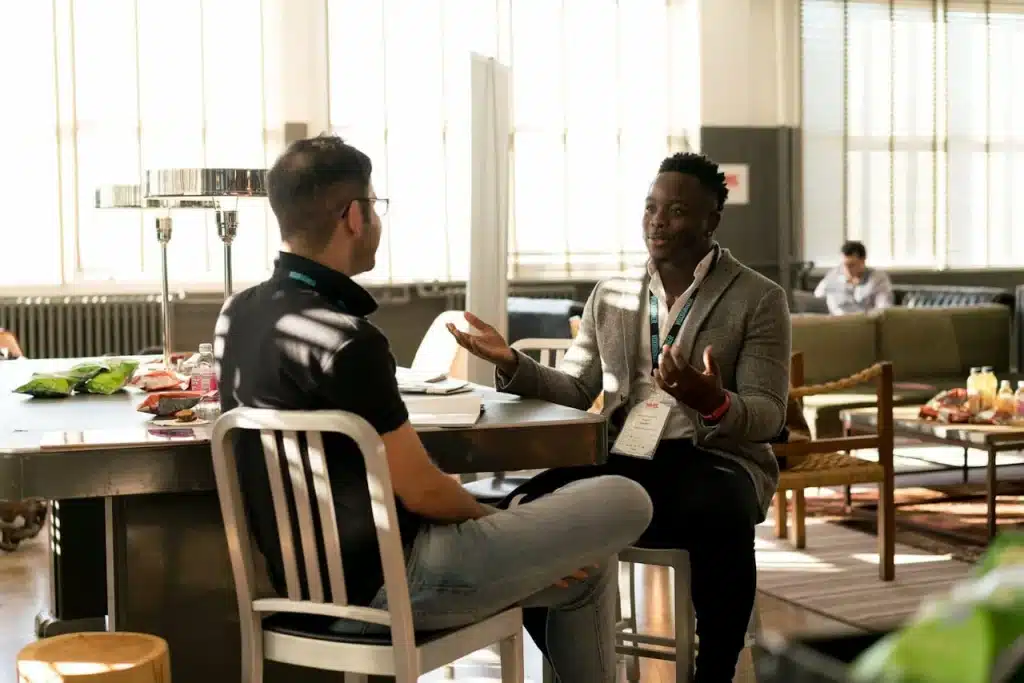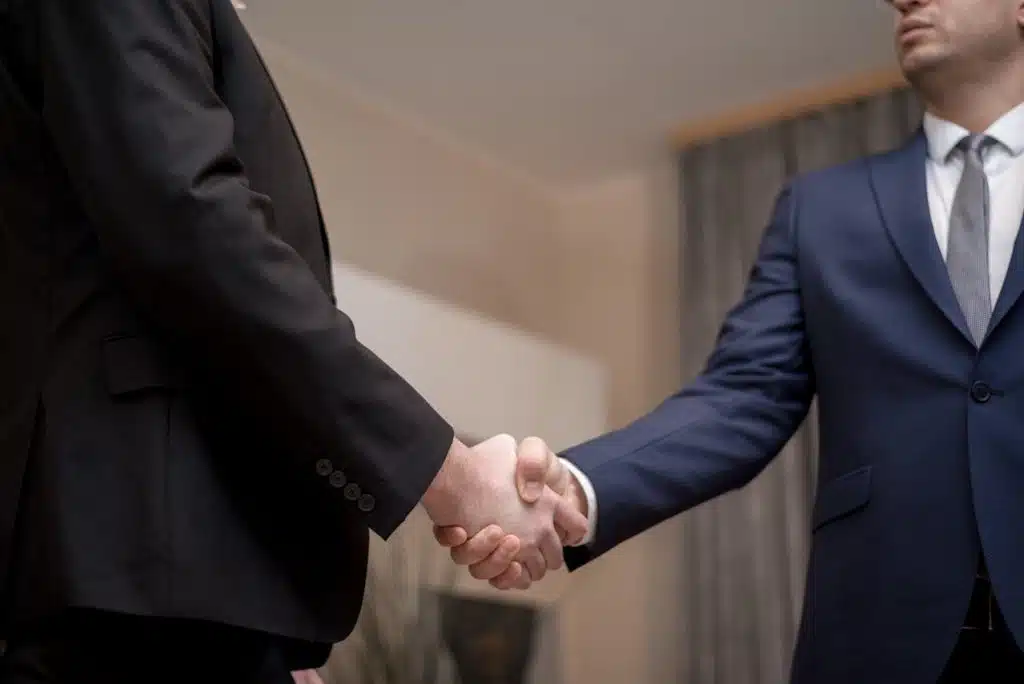It’s important for older kids, like teens and tweens, to learn good table manners because these are skills they’ll need for life.
Some people might think that learning good table manners is just for little kids since we teach them early on. But even as you grow up, there’s always a chance to get better at it. By the time you’re in middle school, it’s important to learn more advanced table manners, not just the basics.
When you’re teaching your middle schooler about good manners, it’s best to make it easy to understand.
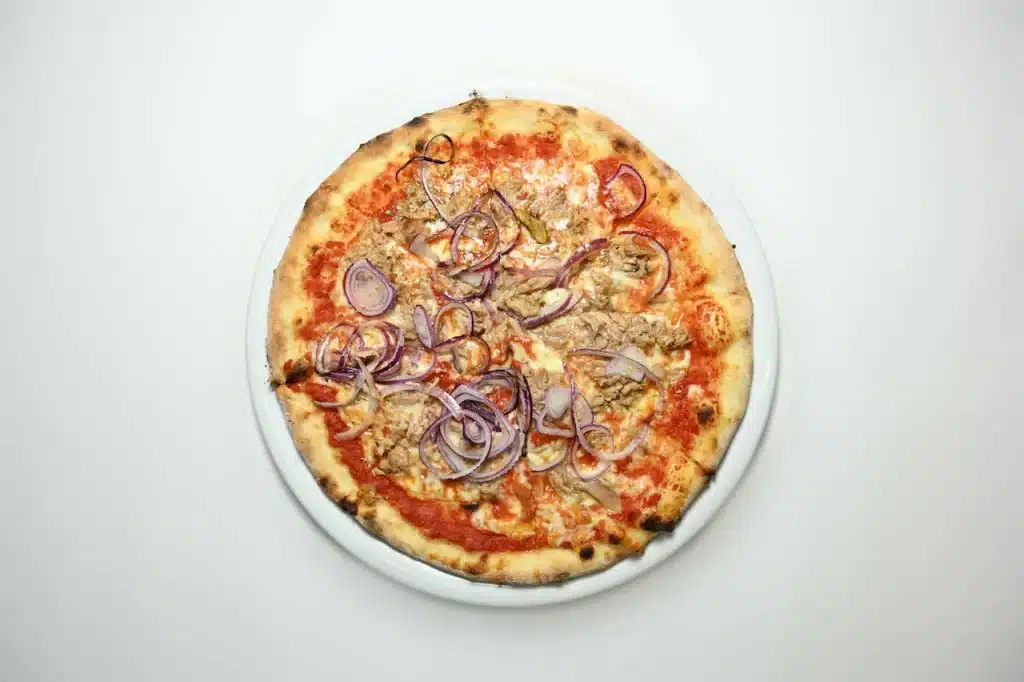
It’s important for older kids to know that when they use good manners at the table, everyone enjoys mealtime more.
Teaching kids how to behave nicely is a big part of being a good parent. You can make it fun to show your middle schooler how to act by doing it together!
Table Manners for Teens
If you’re not sure how to teach your older kids good table manners, here are 21 important things they should learn and remember when eating with the family.
Begin with these basic table manners. Once your teenager gets good at them, you can teach them even fancier ones. It’s easy to forget good manners, so it’s important to help your kids understand why being polite at the table is important.
I made a simple checklist to help you remember what skills you’re practicing. You can find it at the bottom of the page!
Why are Table Manners Important?
Kids in middle school should learn how to behave at the table for a few important reasons.
Manners are a nice way to show you care about other people. They help you be polite and think about how others feel. When everyone uses good manners at the table, it makes eating together more fun for everyone. Using basic manners also shows that you are thankful for the food you get. You don’t want to feel embarrassed if someone doesn’t know how to behave at the table when you’re not around to help them.
That’s why it’s important for kids to learn different ways to behave with others when they’re young, and to get lots of reminders and chances to practice.
How to Teach Table Manners
If you have a kid who’s not very good at using their utensils at the dinner table, it’s okay! That’s pretty normal!
Let’s talk about good manners and why they matter! Good manners help us show respect to others and make everyone feel happy. We can practice saying “please,” “thank you,” and “excuse me.” When you use your manners, I will cheer you on and tell you how great you are doing!
It’s really important to talk about things and share your thoughts. If someone forgets or makes a mistake, it’s okay—just remind them gently and keep it fun. Remember, everyone makes mistakes while learning, and that’s how we get better!
To help kids feel relaxed when eating with friends or at special events, they should learn some good manners for the table.
Manners are like a special skill that everyone needs to learn and practice, just like riding a bike or playing a game. So, it’s important to help your child get better at using good manners during family dinners.
When you’re teaching kids how to behave at the dinner table, remember that everyone in the family, including mom and dad, should show good manners too.
In the end, they will figure it out.
Remember, there’s a FREE checklist at the end of this post that can help you teach these 21 table manners to older kids and teens!
Table Etiquette for Kids
Go through this list with your older kids so they can learn how to be great at the table when eating with others.
1. Technology at the Dinner Table
Don’t use your phone or other gadgets when you’re eating at the table. Keep them away. If you can, try not to bring them with you at all.
Video games shouldn’t be played at the dinner table. It’s not nice to pay more attention to your phone than to the people around you, like your family and friends who are eating with you.
You might feel really sad or worried when you’re away from your family, but don’t worry, you’re going to be okay!
2. Should You Remove Your Retainer at the Table?
No, you can’t take your retainer out while you’re at the table. You should take it out before you sit down to eat.
When you’re done, wait until you get up from the table before putting it back.
3. Chewing Gum Etiquette
If you have gum in your mouth, it’s a good idea to throw it away before you sit down to eat.
Gum should go in the trash can, not sitting on your plate, wrapped in your napkin, or stuck to the table.
4. Using Napkins at the Dinner Table
When you sit down to eat, you should take your napkin and spread it out on your lap. It doesn’t matter if it’s sitting nice and tidy next to your plate or shaped like a cool fan or a swan. If you’re at a dinner party, just wait until the person in charge (the host) picks up their napkin first, and then you can do the same.
Make sure to use your napkin to wipe your mouth while you eat. Your sleeves should not be used instead of a napkin.
When you’re done eating or you get up from the table, put your napkin on the left side of your plate or on your chair.
5. Knife and Fork Etiquette
Kids might wonder why we have all the different forks and spoons. Once they learn how to put the table together, it’s important for them to learn how to use the silverware too!
When you eat, if you see more than one fork or knife on your table, use the one that’s farthest away from your plate first and then use the ones that are closer as you go through your meal.
It’s better to use your knife and fork together to cut your food instead of trying to use just the fork to chop it.
When you’re done using your fork and knife, put them on your plate in a shape like a sideways letter “V”.
And remember, don’t use your forks and spoons to play fight, even if it’s just pretend!
6. Reaching Across the Table
Can I get it? How far away is too far to grab food?
If you have to stretch your arm out all the way and lean a little bit forward to grab something, then it’s too far away. Also, if someone has to lean back while you’re trying to reach it, that means it’s too far.
Instead, say, “Please pass me the…”
7. How to Pass Food at the Table
When you hand out food, give it to the person on your right. If someone else starts passing food the other way, just go along with it. The most important thing is to be nice!
Remember, it’s not a competition. If someone next to you is already holding a plate, don’t ask them to hold another one. It’s better to be patient and wait until they’re done.
8. Passing Dishes with Handles
When you pass a dish, if it has a handle, hold it by the handle. Make sure to turn it so the handle is facing the person you’re giving it to, so they can grab it easily.
Don’t let them touch the main part of the dish because it might be hot and can hurt them. That’s why it has a handle to hold it safely.
9. Leaving Food for Others
When the food comes to you, take some for yourself, but remember to save some for the other kids too. We know you’re really hungry, but it’s nice to share!
You can have more food if you want, but let everyone else have some first!
10. Wait for Everyone to Be Served Before Eating
Is it a good idea to wait for everyone to get their food before you start eating? Yes, it is!
When you’re at a meal, wait for everyone to sit down and get their food before you start eating, unless the person who is hosting says it’s okay to start.
It’s nice to wait for everyone to get their food before you start eating.
11. Don’t Take Huge Bites
It’s not nice to stuff a lot of food in your mouth at once.
When you eat too much food at once, you might not be able to close your mouth while you chew, and it will take a long time to finish eating.
Make sure to take small bites that are easy to chew!
One way to make eating easier is to cut a little bit of your food into small pieces at a time. This way, your food won’t get cold, and it will help you eat slowly instead of gobbling it all up too fast.
12. Chew With Your Mouth Closed
Please, no eating food that you can see on the table.
Chewing with your mouth closed is an important rule for being polite when you eat.
It’s not nice for people to see food in your mouth. So, please don’t talk when you’re eating, and try to keep your mouth closed while you chew.
13. Take Part in Dinner Conversations
Now that you’re a bit older, we want you to be involved and pay attention during meals. This means sitting up straight, not moving around too much, and talking nicely when someone asks you something.
Instead of just sitting quietly, join in and talk with everyone at the table!
Talking and listening well is really important for kids and teenagers. Eating dinner together is a great time to practice these skills.
14. How to Leave the Table
If you need to get up from the table before everyone is done eating, it’s nice to ask if you can leave or tell them you’ll be back soon.
Just keep it simple. It’s better if we don’t know too much.
If you’re not sure what to do with your napkin, look at number 4 again.
Finish what you need to do and come back to the table as quickly as you can.
15. Don’t Complain About the Food
Sometimes, you might not like what you’re given to eat, but it’s nice to keep any mean thoughts to yourself.
If you get new foods that you don’t like, just take a little bit and try to eat some of it. Even if you’re picky about food, it’s important to be polite.
Always say thank you to the person who made the food, even if you didn’t like it very much. They put in a lot of effort, so it’s nice to be polite and keep any unkind thoughts to yourself.
If you have special food needs, like if you can’t eat gluten or if you don’t eat meat, it’s nice to let the person who invited you know when they ask you to come. If they serve you food and there’s something you can’t eat, just eat the parts you can.
16. No Rude Noises at the Dinner Table
When you’re eating at the table, it’s important to be polite. That means no loud burps, farts, or slurping sounds.
17. What to Do With the Silverware When You’re Done Eating
When you’re done eating, put your fork and knife next to each other on the right side of your plate. Make sure the sharp part of the knife is pointing toward the plate and the prongs of the fork are facing up, like the hands of a clock pointing at 10 and 4.
This lets everyone at the table and the people serving food know that you have finished eating and they can take your plates away.
18. Freshening up at the Table
Is it okay to clean yourself at the table? No, you should do that in the bathroom instead.
You are wonderful just as you are! And just a little reminder: it’s not a good idea to brush your hair or put on make-up at the table.
Please wait until everyone is finished eating before you go to the bathroom or take a quick break.
19. Don’t Leave the Table Before Everyone Has Finished Eating
If your friends are still eating or chatting, it’s okay to stay and have fun with them, even if you’ve already finished your food.
After you finish your food, don’t just leave right away. Stay for a little while, chat with others, and enjoy some time together.
20. Help to Clean Up
After we finish eating, let’s help tidy up! We can pick up the plates from the table, wash the dishes, put any leftover food in containers, and take out the trash.
I get it; it seems boring. A lot of people think so too. But that doesn’t mean you shouldn’t lend a hand.
Welcome to being a grown-up!
21. Acknowledging the Effort in Meal Preparation
In the world of dining, whether at home or in a restaurant, the effort behind preparing a meal deserves recognition. A sincere compliment not only uplifts the cook but also enhances the dining experience. However, the key to effective acknowledgment lies in authenticity—exaggeration or insincerity can undermine your intention. Here’s how to express your appreciation meaningfully.
Understanding the Importance of Recognition
Cooking is an art that often requires time, creativity, and skill. Acknowledging the effort someone puts into a meal can strengthen relationships, foster a positive atmosphere, and encourage cooks to continue honing their craft. A genuine compliment shows that you value their hard work and the thought they invested in the dish.
Crafting Your Compliment
- Be Specific: Instead of a generic “This is great,” try something more descriptive. Comment on the flavors, presentation, or technique. For example, “I really love how the spices come together in this dish; it adds such depth.”
- Express Genuine Emotion: Share how the meal makes you feel. Saying, “This reminds me of the meals my grandmother used to make; it brings back such fond memories,” adds a personal touch that resonates more deeply.
- Acknowledge the Effort: Highlighting the time or effort involved can enhance your compliment. “I can tell you put a lot of thought into this recipe; the balance of flavors is perfect.”
Avoiding Exaggeration
While enthusiasm is great, it’s essential to keep your compliments grounded. Here are some tips to avoid sounding insincere:
- Stay Authentic: Only praise what you genuinely appreciate. If something wasn’t to your taste, it’s okay to focus on other positive aspects, like presentation or effort.
- Use Measured Language: Avoid superlatives like “the best” or “amazing” unless you truly mean it. Phrases like “I really enjoyed this” or “This is a lovely dish” can convey appreciation without overstating your feelings.
Encouraging Future Efforts
A sincere compliment not only acknowledges the current meal but can also encourage future culinary endeavors. Expressing appreciation can motivate cooks to experiment more and try new recipes, fostering a positive cycle of creativity and collaboration in the kitchen.
Etiquette Lessons

If you want to learn more about being polite and nice, and you don’t want to do it by yourself, you can use a special program to help teach your kids about things like how to behave at the dinner table.
You can try studying at The Los Angeles School of Etiquette and Protocol, because they have short lessons and fun activities you can do!

